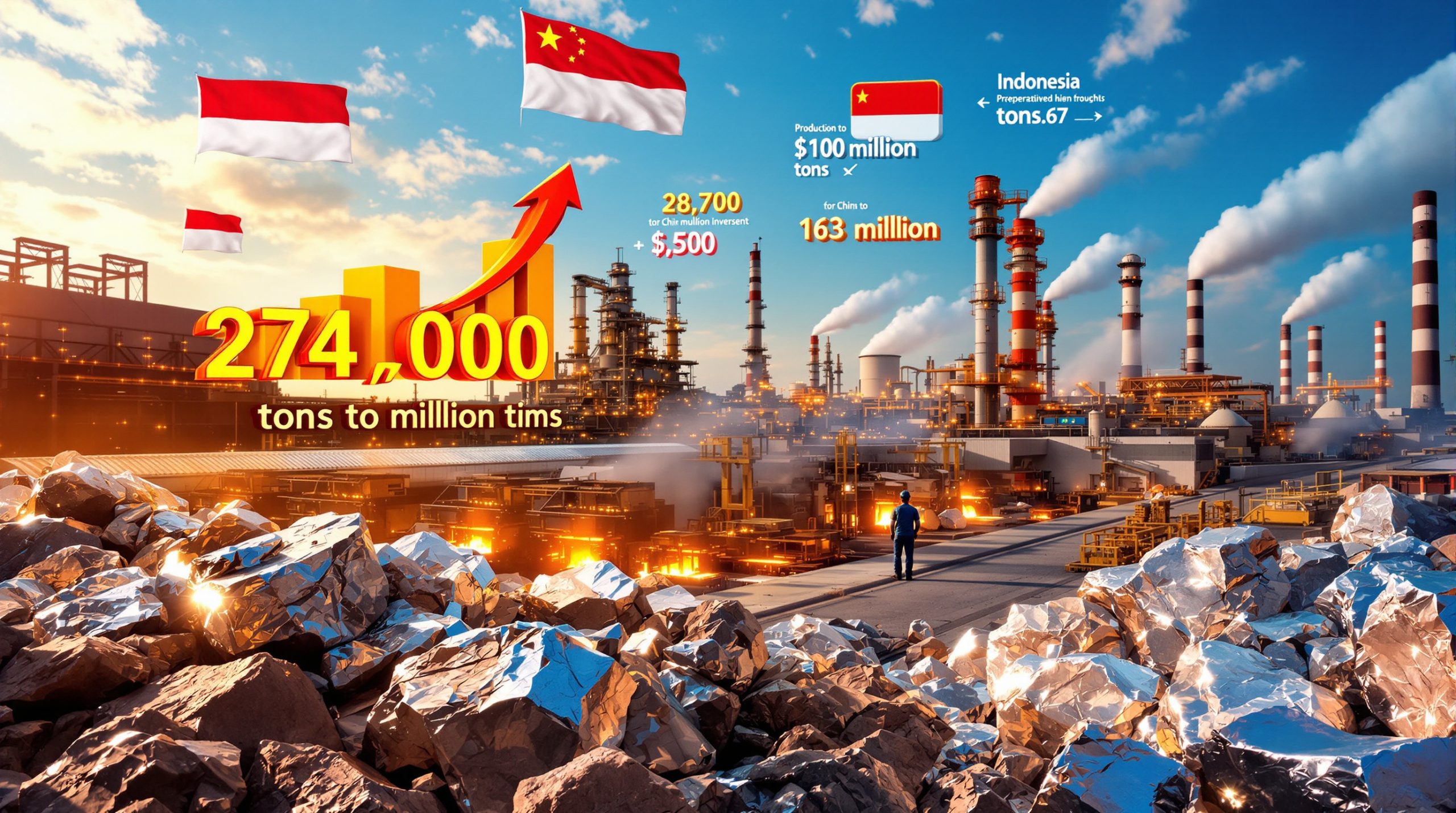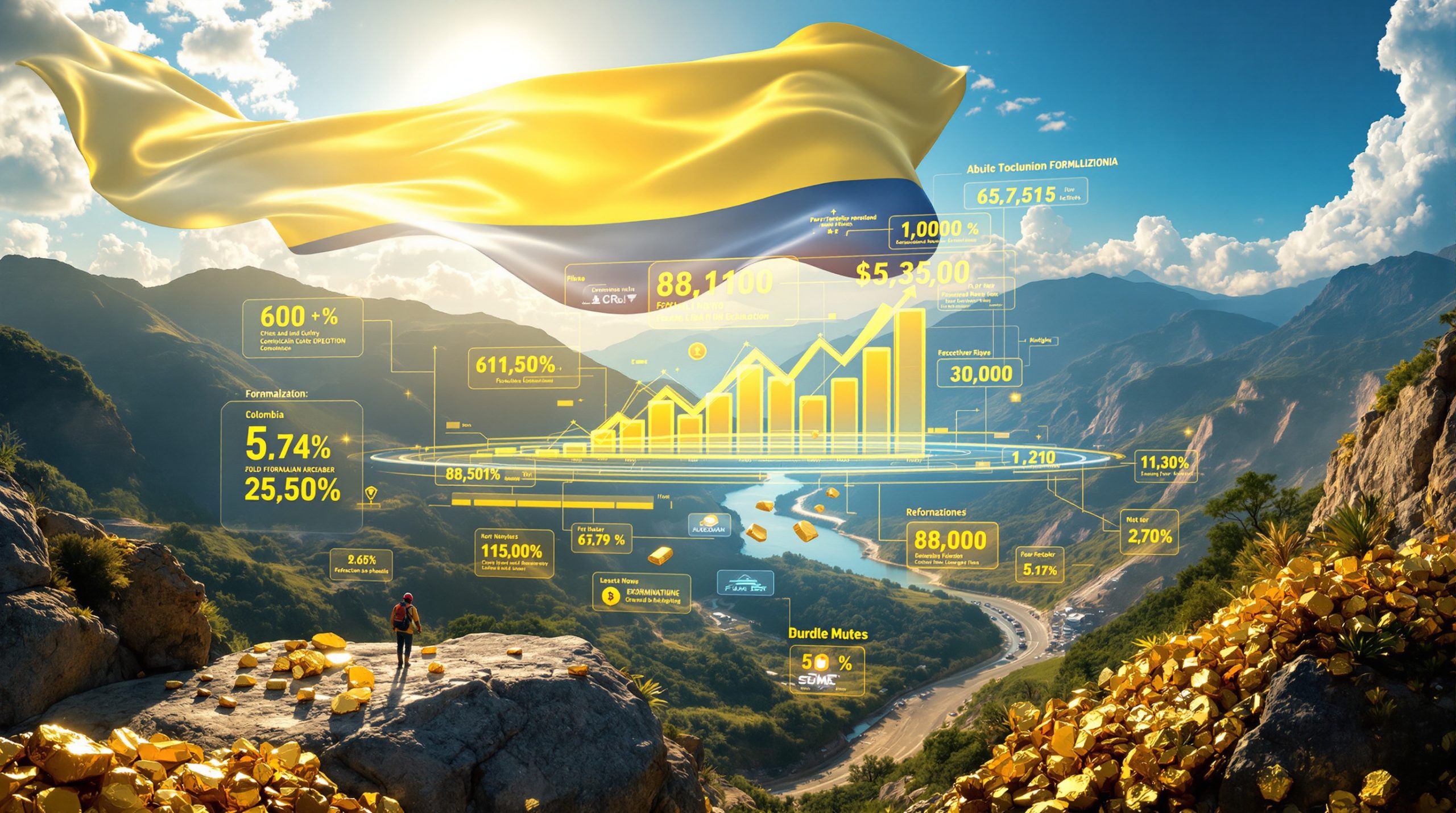How Does Trump's 50% Tariff Threat Impact Copper Futures?
Understanding the Copper Market Surge
Copper futures soared to unprecedented heights following Donald Trump's announcement of potential 50% tariffs on the industrial metal. The July 9, 2025 session saw copper prices break through previous resistance levels, creating a significant ripple effect across global commodities markets. This dramatic price movement highlights copper's sensitivity to trade policy shifts and its role as a barometer for global economic sentiment.
The orange metal's swift reaction underscores its unique position in global trade networks. Unlike previous commodity price shifts, this surge was triggered almost exclusively by policy speculation rather than supply-chain disruptions or physical market fundamentals, according to analysis from S&P Global Commodity Insights.
"The copper market's reaction demonstrates how policy uncertainty can create immediate price volatility even before implementation details are clarified," notes commodities analyst Maria Chen of Macquarie Group.
This isn't the first time Trump-era tariff proposals have jolted metals markets. In 2018, aluminum prices jumped approximately 12% within 30 days following the implementation of Section 232 tariffs. However, the current copper reaction appears more pronounced, with London Metal Exchange (LME) copper contracts experiencing heightened volatility as traders attempt to price in various trade war copper impact scenarios.
Trump's Proposed 50% Tariff Explained
The proposed 50% tariff would represent one of the most aggressive trade actions against copper imports in modern history. While specific implementation details remain limited, market analysts believe the tariffs would primarily target China, Chile, and Peru – the world's largest copper producers and exporters to the United States.
Trump's policy announcement follows his consistent "America First" trade philosophy but arrives at a particularly sensitive time for global copper markets. The green energy transition has already placed unprecedented demand pressure on copper supplies, with electric vehicles requiring approximately four times more copper than traditional combustion engine vehicles.
The tariff proposal differs significantly from Trump's previous metal tariffs in both scale and scope:
| Tariff Action | Implementation Year | Rate | Target Countries | Market Impact |
|---|---|---|---|---|
| Section 232 Steel | 2018 | 25% | Broad global | +25% price spike |
| Section 232 Aluminum | 2018 | 10% | Broad global | +12% price jump |
| Proposed Copper Tariff | 2025 (potential) | 50% | Likely China, Chile, Peru | Record price levels |
Implementation timing remains uncertain, but experts suggest any actual tariff application would likely follow a review period of 60-90 days should Trump secure electoral victory. This timeline uncertainty partially explains the seemingly paradoxical market reaction among copper producers.
How Are ASX Copper Miners Responding?
The Paradoxical Market Reaction
In what initially appears counterintuitive, ASX-listed copper miners experienced share price declines despite copper futures reaching all-time highs. This disconnect between commodity prices and producer valuations reveals sophisticated market dynamics that extend beyond simple price correlation.
The apparent paradox can be explained through several key factors:
-
Implementation uncertainty: Investors recognize the gap between policy announcements and actual implementation, especially given the contingencies surrounding electoral outcomes.
-
Cost structure concerns: Higher tariffs may ultimately reshape global copper supply chains, potentially increasing production and transportation costs for Australian miners.
-
Demand destruction fears: Economists warn that excessive tariffs could trigger a slowdown in global manufacturing, ultimately reducing total copper demand.
-
Profit margin complexity: While higher copper prices typically benefit miners, the potential for retaliatory trade measures could compress margins through reduced access to key markets.
Short interest data from the Australian Securities and Investments Commission (ASIC) shows increased positions against several leading copper producers, suggesting professional investors are hedging against longer-term structural disruptions in the copper market.
Key ASX Copper Players to Watch
Australia's copper mining landscape features several key players with varying exposure to international markets and different production profiles. This diversity creates a nuanced investment landscape under tariff threat scenarios:
BHP Group (ASX: BHP) – While diversified across multiple commodities, BHP's Olympic Dam operation in South Australia remains one of the world's largest copper deposits. The company's extensive global footprint potentially insulates it from single-market tariff impacts, explaining its relatively smaller share price decline of 2.3% compared to pure-play copper miners.
29Metals (ASX: 29M) – As a mid-tier producer with operations primarily in Queensland, 29Metals saw its shares decline 3.5% following the tariff announcement. The company's production of approximately 30,000 tonnes annually makes it particularly sensitive to copper price volatility.
Sandfire Resources (ASX: SFR) – With significant operations in both Australia and internationally, including its MATSA mining complex in Spain, Sandfire experienced a 3.1% decline. Analysts note that Sandfire's geographic diversity could become increasingly valuable in a fragmented global trade environment.
OZ Minerals – Now under BHP ownership, this former ASX-listed copper producer represents a strategic copper acquisition motivated partly by anticipated long-term surging copper demand outlook.
Aeris Resources (ASX: AIS) – This smaller producer experienced the largest percentage decline at 4.2%, highlighting how market capitalization often correlates with volatility during trade policy shocks.
What Other Sectors Were Impacted by Wednesday's Trading?
Sector Performance Breakdown
The ASX market close copper futures surge on 50% tariff threat revealed distinct sector patterns extending well beyond the copper narrative. The utilities sector emerged as the day's standout performer, advancing approximately 1.8% collectively. This outperformance appears linked to investors seeking defensive positioning amid trade uncertainty and the Reserve Bank of Australia's decision to maintain current interest rates.
Energy infrastructure companies like APA Group and AusNet Services led the utilities advance, benefiting from their regulated revenue models that offer insulation from immediate economic shocks. The sector's strong performance also reflects Australia's ongoing energy transition, with renewable energy policies creating long-term tailwinds for utilities with significant green energy exposure.
In stark contrast, the real estate sector lagged significantly following the RBA's decision to pause rate adjustments. Property trusts with retail and commercial exposure faced particular pressure as investors recalibrated yield expectations. The RBA's commentary suggesting potential future tightening if inflation remains persistent further dampened sentiment toward interest-rate-sensitive sectors.
This sector divergence highlights how central bank policy and trade tensions create winners and losers across the investment landscape:
- Outperformers: Utilities (+1.8%), Healthcare (+1.2%), Consumer Staples (+0.9%)
- Underperformers: Real Estate (-1.4%), Materials (-0.8%), Information Technology (-0.5%)
Notable Stock Movements
Several individual stocks experienced significant price movements during the session, offering insights into specific company dynamics and broader market psychology:
Botanix Pharmaceuticals (ASX: BOT) rebounded 19% during the final half-hour of trading, recovering ground lost during previous sessions. This pharmaceutical developer focusing on dermatology treatments saw its share price volatility coincide with anticipated clinical trial results. The dramatic recovery suggests potential information leakage or strategic institutional buying ahead of formal announcements.
Vulcan Energy Resources (ASX: VUL) gained 8% amid what analysts described as a "slight rebound in lithium prices." As a developer of zero-carbon lithium extraction technology in Europe, Vulcan's performance highlights how green economy stocks remain sensitive to both commodity prices and policy shifts. The company's European focus may offer insulation from U.S.-China trade tensions.
SkyCity Entertainment Group (ASX: SKC) jumped 5% in the session, contributing to an impressive 10% weekly gain. The casino and entertainment company has benefited from Australia's post-pandemic tourism recovery and reduced regulatory uncertainty following completed compliance reviews. This performance illustrates how companies can outperform broader indices when emerging from specific sectoral challenges.
Why Did Some Stocks Experience Dramatic Losses?
Lifestyle Communities' Legal Troubles
The most dramatic single-stock movement came from Lifestyle Communities (ASX: LIC), which plummeted approximately 40% in the final twenty minutes of trading. This catastrophic decline followed a Federal Court ruling that deemed the company's exit fee structure illegal, effectively undermining a core component of its business model.
The ruling specifically challenged the legality of Deferred Management Fees (DMFs), which typically charge departing residents a percentage of their unit's resale value. For Lifestyle Communities, these fees represented approximately 20% of annual revenue according to recent financial reports. The court found these arrangements violated consumer protection provisions by creating "unfair contract terms" under Australian Consumer Law.
This legal precedent creates significant implications for the broader retirement living sector:
- Immediate revenue risk: Companies must recalibrate financial projections without exit fee contributions
- Retrospective claims: Potential class action exposure from previous residents
- Valuation metrics: Fundamental reappraisal of sector companies using similar fee models
- Regulatory scrutiny: Increased oversight across all retirement living fee structures
Other retirement sector operators including Ingenia Communities Group (ASX: INA) and Stockland (ASX: SGP) also experienced share price pressure, though less severe, falling 7.5% and 4.2% respectively as investors reassessed regulatory risks across the industry.
Resource Stock Declines
Beyond copper, several resource stocks experienced notable declines that reveal important subsector dynamics:
Paladin Energy (ASX: PDN) fell 8% in correlation with a 2% drop in NYMEX uranium futures. As Australia's largest pure-play uranium producer, Paladin's heightened sensitivity to uranium price movements demonstrates the leverage effect in commodity producers. The uranium market itself appears to be responding to potential delays in Japanese reactor restarts and inventory adjustments by U.S. utilities.
"Uranium's supply-demand fundamentals remain strong, but the market is experiencing increased volatility as nuclear policy evolves across major economies," explains uranium market specialist Jonathan Chen of UxC Consulting.
Amaero International (ASX: 3DA) declined 7% as investors rotated toward Electro Optic Systems (ASX: EOS), which gained 5%. This rotation within the defense technology space highlights changing investor preferences for companies with more immediate revenue prospects versus earlier-stage technologies. Amaero's additive manufacturing (3D printing) technologies for defense applications represent longer-term value propositions compared to Electro Optic's established defense contracts.
What Are the Global Implications of Copper Tariffs?
International Trade Dynamics
The potential implementation of 50% copper tariffs would create far-reaching consequences across global supply chains and international relations. China, Chile, and Peru – collectively accounting for over 45% of global copper production – would face significant export disruptions to the U.S. market.
Chile, with copper representing approximately 20% of its GDP and over 50% of its export earnings, faces particular vulnerability. Economic analysis suggests a 50% tariff could reduce Chilean copper exports to the United States by up to 30%, potentially triggering currency depreciation and fiscal challenges for the South American nation.
The probability of retaliatory measures remains high, with China possessing multiple response options:
- Targeted counter-tariffs on U.S. agricultural exports
- Rare earth element restrictions, leveraging China's dominance in these critical minerals
- Currency policy adjustments to offset tariff impacts
- Accelerated trade agreements with non-U.S. partners
For manufacturers, particularly in electronics, automotive, and construction sectors, the tariffs would likely accelerate already-developing supply chain realignments. Companies may accelerate copper sourcing from tariff-exempt nations while passing increased costs to consumers where possible.
Investment Strategy Considerations
The copper tariff scenario creates distinct investment implications requiring strategic portfolio adjustments:
Hedging Opportunities: Investors can consider options strategies on copper futures or producer equities to manage heightened volatility. The Copper ETF (CPER) and Global X Copper Miners ETF (COPX) provide liquid vehicles for expressing various market views.
Geographic Diversification: Copper producers with operations across multiple jurisdictions offer better insulation from bilateral trade tensions. Companies with significant Australian, Canadian, or African production may benefit from trade diversion effects as U.S. buyers seek tariff-exempt sources.
Vertical Integration Exposure: Companies controlling larger portions of the copper value chain – from mining through refining and fabrication – potentially offer better margin protection during trade disruptions.
Downstream Focus: Manufacturers demonstrating pricing power and the ability to pass higher copper costs to customers represent relatively safer exposures to the metal.
A prudent approach involves maintaining some copper exposure while implementing tactical hedges against extreme scenarios. Commodity strategists generally recommend reducing pure commodity price exposure in favor of producers with superior cost positions and balance sheet strength.
How Does This Fit Within Broader Market Trends?
Commodity Market Context
Copper's status as a leading economic indicator – often called "Dr. Copper" for its ability to predict economic turns – makes its tariff-driven price action particularly significant. The metal's integral role in construction, manufacturing, and increasingly, renewable energy infrastructure means its pricing dynamics reflect broader economic expectations.
The current copper rally emerges against a complex commodity backdrop:
- Industrial metals: Generally strengthening on infrastructure spending and electrification trends
- Precious metals: Rising amid geopolitical uncertainty and inflation concerns
- Agricultural commodities: Experiencing volatility due to climate events and export restrictions
- Energy: Undergoing structural transition with fossil fuels facing long-term demand questions
Copper's correlation with other industrial metals has strengthened in recent months, with aluminum and nickel displaying similarly heightened sensitivity to trade policy shifts. This growing correlation suggests institutional investors increasingly view these metals as a unified trade rather than distinct commodities.
Inflation expectations also influence copper's trajectory, with the metal traditionally serving as an inflation hedge. Current producer price indexes across major economies show persistent input cost pressures, potentially supporting higher metal prices independent of tariff effects.
Technical Analysis Perspectives
From a technical standpoint, copper futures demonstrate several significant patterns that provide context for current price action:
The most recent surge pushed prices through the psychologically important $11,000/tonne level, representing the completion of a multi-year cup-and-handle formation. This classically bullish pattern suggests potential for continued upward momentum.
Key technical indicators include:
- Relative Strength Index (RSI): Currently registering overbought readings above 75, suggesting near-term correction risks
- Moving Average Convergence Divergence (MACD): Showing strong positive momentum with histogram bars expanding
- Volume Profile: Demonstrating institutional accumulation with above-average trading volumes during price advances
Significant resistance levels include the newly established all-time high at approximately $11,200/tonne, while support has formed around the 50-day moving average at $10,400/tonne. The widening Bollinger Bands indicate accepted higher volatility, typical during fundamental market shifts.
Trading professionals note the unusually high options activity in copper futures, with call options at strike prices 10-15% above current levels seeing substantial volume increases – suggesting significant speculative positioning around potential further upside.
What's Next for Copper and Related Investments?
Short-Term Price Projections
Analysts offer diverging views on copper's immediate trajectory, reflecting the unusual nature of policy-driven price action rather than fundamental supply-demand shifts:
Goldman Sachs maintains its bullish copper forecast, projecting prices reaching $12,000/tonne within six months based on structural supply deficits and accelerating energy transition demand. Their analysis suggests tariff impacts would exacerbate already tight physical markets.
More conservative forecasts from JPMorgan Chase anticipate a pullback to the $10,500-$10,800 range as speculative positioning moderates and implementation timelines extend. Their models indicate a 35% probability of full tariff implementation, with staged introduction more likely than immediate application.
Key events likely to influence near-term copper prices include:
- Federal Reserve policy announcements regarding inflation response
- Chinese infrastructure spending commitments and economic stimulus measures
- Major mining company production reports and guidance updates
- Further trade policy clarifications from U.S. officials
The technical picture suggests increased volatility with upward bias, though the extremely rapid price appreciation likely requires consolidation before sustainable higher levels can be established.
Strategic Investment Approaches
Investors seeking copper exposure face a more complex landscape requiring nuanced approaches beyond simple directional positioning:
Direct vs. Indirect Exposure Options:
- Direct: Futures contracts, copper ETFs (CPER, JJC), physical copper
- Indirect: Mining equities, copper ETFs (COPX), industrial ETFs with copper sensitivity
- Peripheral: Suppliers to copper miners, recycling companies, copper technology innovators
Risk Management Strategies:
- Options hedging: Protective puts on mining equities or collars on direct copper exposure
- Position sizing: Reducing copper allocation percentages while maintaining strategic exposure
- Time diversification: Staggered entry points to average into positions during volatility
- Quality focus: Emphasizing producers with superior cost positions and balance sheet strength
Alternative Metals Benefiting:
Aluminum emerges as a potential beneficiary from copper substitution efforts, particularly in electrical applications where appropriate. Recycling economics improve significantly for both metals under tariff scenarios, potentially benefiting companies specializing in metal recovery and processing.
For long-term investors, maintaining strategic exposure to copper remains prudent given electrification trends and green energy transition demands, but tactical adjustments and hedging become increasingly important during periods of policy-driven volatility. Investors should consider developing [copper investment strategies](https://discoveryalert.com
Are You Ready to Discover the Next Major ASX Mining Opportunity?
Don't miss potential market-leading investment opportunities—visit Discovery Alert's discoveries page to explore how their proprietary Discovery IQ model has identified significant mineral discoveries that delivered exceptional returns for early investors.




